
Anthia is a genus of the ground beetle family (Carabidae). Species of Anthia can spray a jet of formic acid up to 30 centimetres (12 in), which if not treated, can cause blindness in animals which harass the beetles.
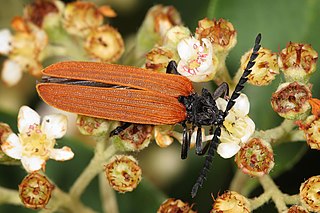
The Lycidae are a family in the beetle order Coleoptera, members of which are commonly called net-winged beetles. These beetles are cosmopolitan, being found in Nearctic, Palearctic, Neotropical, Afrotropical, Oriental, and Australian ecoregions.
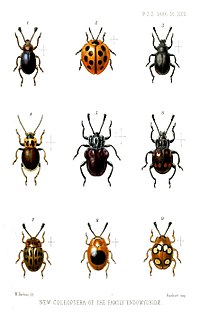
Endomychidae, or handsome fungus beetles, is a family of beetles with representatives found in all biogeographic realms. There are around 120 genera and 1300 species. The family was established based on the type genus Endomychus, a genus erected in 1795 by Panzer which was applied to a species that Linnaeus called Chrysomela coccinea. As the common name suggests, Endomychidae feed on fungi. Crowson, in his influential treatment of the beetles, placed the family within the Cucujoidea. They have a tarsal formal of 4-4-4 or 3-3-3 and the wings lack a closed radial cell. The second antennal segment has a sensory appendage that is as long as the third antennal segment. The family has also been grouped with the Coccinellidae in a group called the Trimera for having pseudotrimerous tarsi. A 2015 molecular phylogeny study found that the Cucujoidea were found to be non-monophyletic and the Endomychidae was refined with the removal of the Anamorphinae from within the family and elevated to the status of a full family, Anamorphidae. Mycetaeinae and Eupsilobiinae were also found not to belong within the clades of the core Endomychidae, and likewise reclassified into the families Mycetaeidae and Eupsilobiidae.

Attagenus is a genus of beetles. This genus is found in tropical Africa, the Palearctic including Europe, the Near East, the Nearctic, North Africa and East Asia. There are nearly 200 species. The genus has existed for at least 99 million years, with fossils known from the Cenomanian aged Burmese amber and Turonian aged New Jersey amber.
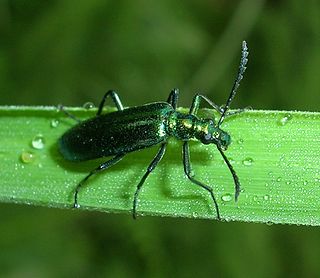
Prionoceridae is a small family of beetles, in the suborder Polyphaga. They form a group within the cleroid beetles and were formerly treated as a subfamily (Prionocerinae) within the family Melyridae. Very little is known of their life history but most species are pollen feeders as adults and occur in large numbers during spring or the host flowering season. Larvae are predatory or feed on decomposing wood.

Conognatha is a genus of beetles in the family Buprestidae, tribe Stigmoderini, containing the following species: They are found in the Neotropical realm.

Pheropsophus is a genus of beetles in the family Carabidae, containing the following 138 species:

Mylabris is a genus of beetles in the family Meloidae. It is endemic to the Palearctic realm. The species-rich genus Hycleus was historically confused with Mylabris. It is superficially similar, but is centered on the Afrotropics.
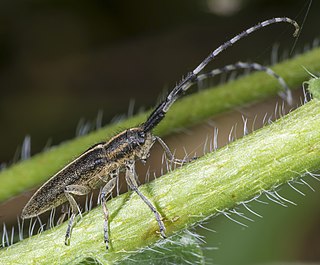
Agapanthiini is a tribe of longhorn beetles of the subfamily Lamiinae.

Lamiini is a tribe of longhorn beetles of the subfamily Lamiinae.

Glenea is a genus of longhorn beetles belonging to the family Cerambycidae, subfamily Lamiinae.
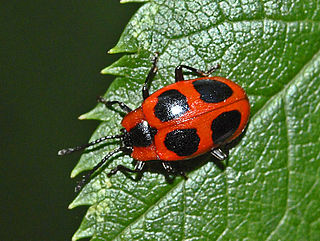
Endomychus is a genus of beetles in the family Endomychidae.

Dysdercus is a widespread genus of true bugs in the family Pyrrhocoridae; a number of species attacking cotton bolls may be called "cotton stainers".
Danae is a genus of handsome fungus beetles in the family Endomychidae. There are more than 90 species in Danae, 1 found in North America, about 10 in Asia, and the remainder in Africa.
Epipocus is a genus of handsome fungus beetles in the family Endomychidae. There are at least 20 described species in Epipocus.

Trochoideus is a genus of handsome fungus beetles in the family Endomychidae. There are about 10 described species in Trochoideus.
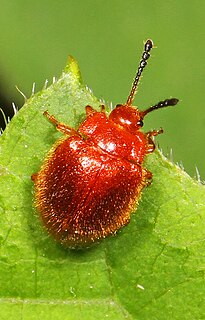
Stenotarsus is a genus of handsome fungus beetles in the family Endomychidae. There are more than 50 described species in Stenotarsus.
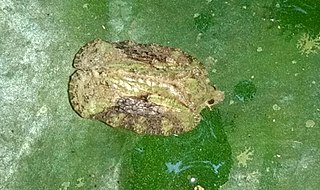
Atracis is a genus of flatid planthopper with around 60 species distributed in the Oriental Realm and tropical Africa.

Campion is a genus of lacewings belonging to the family Mantispidae.

















